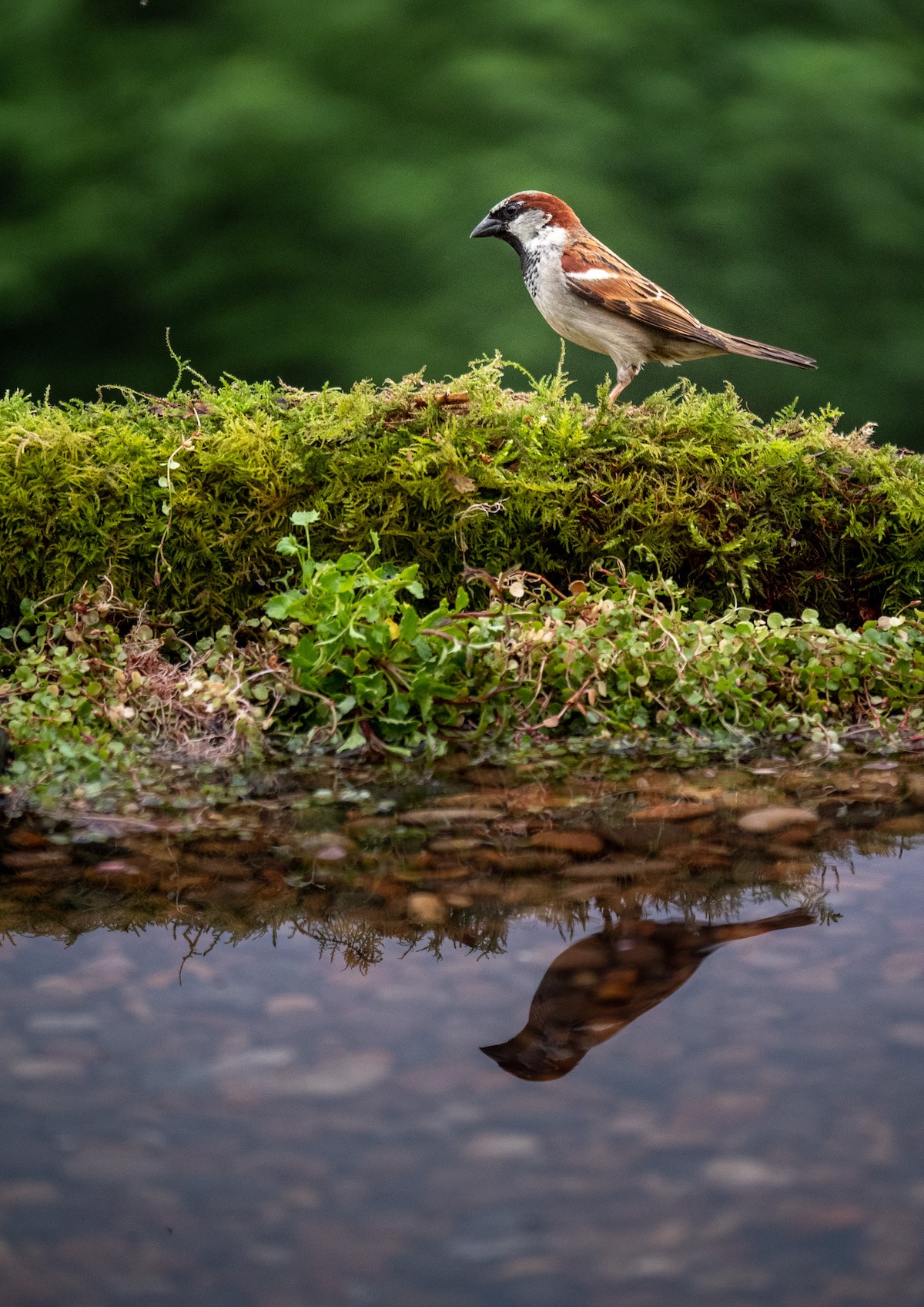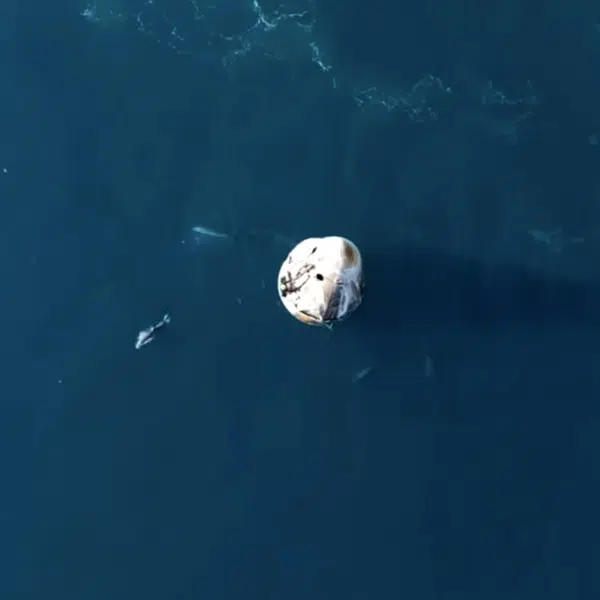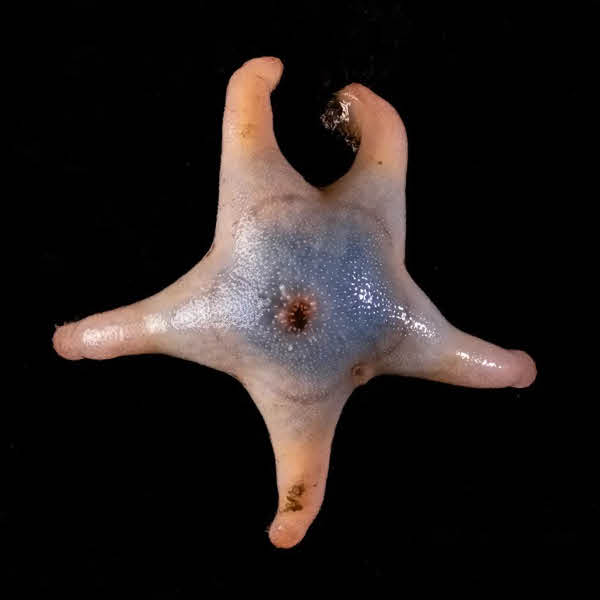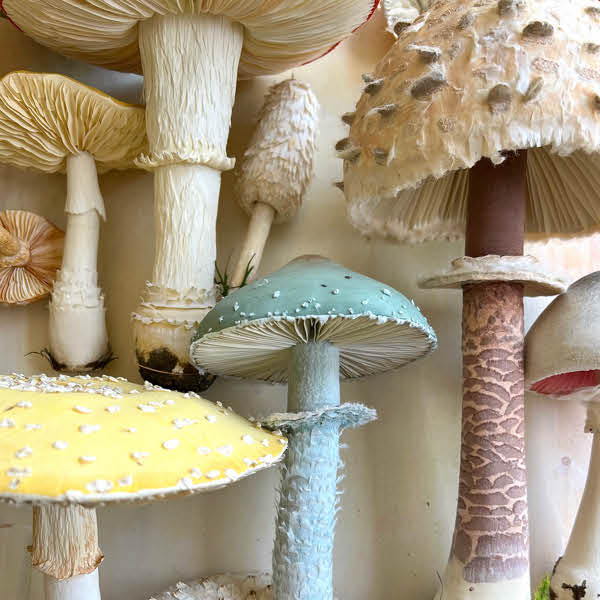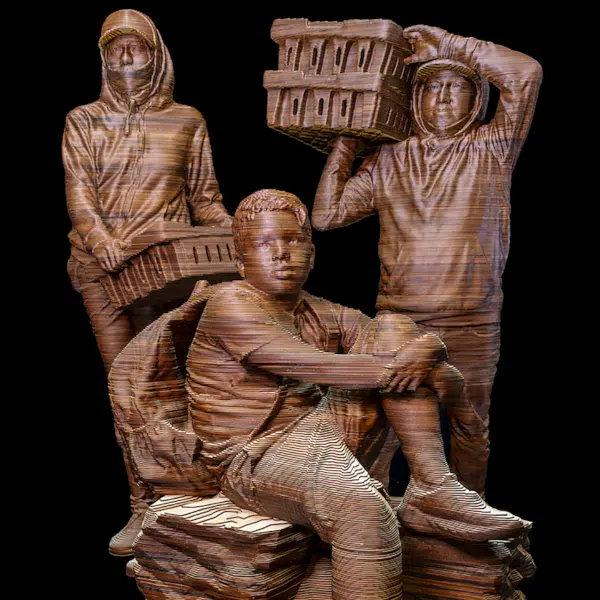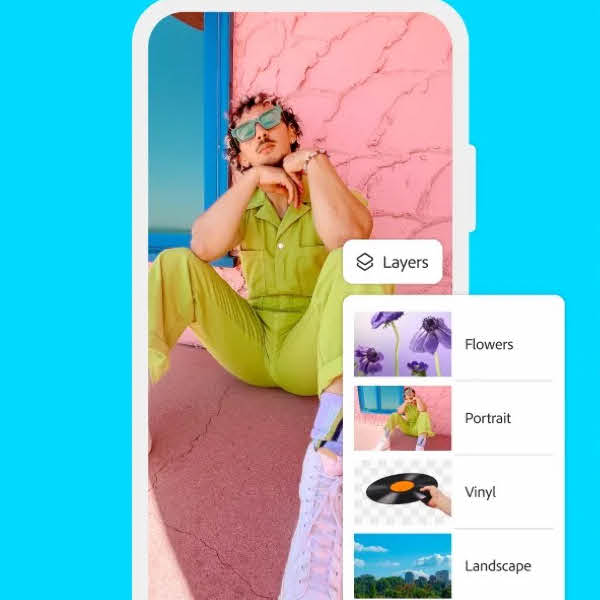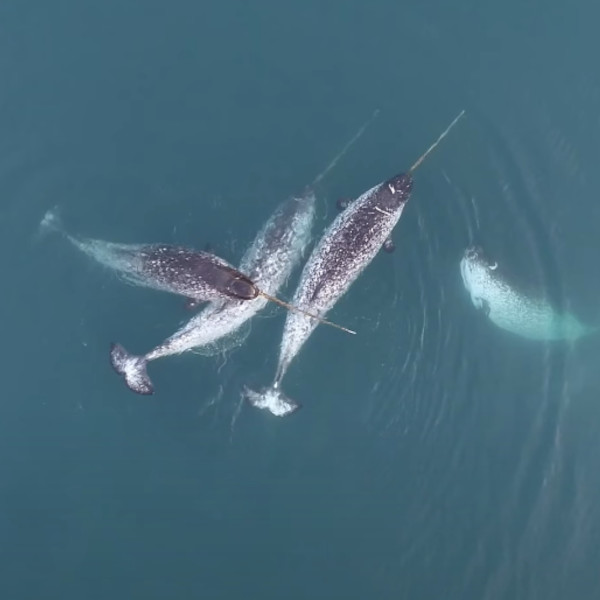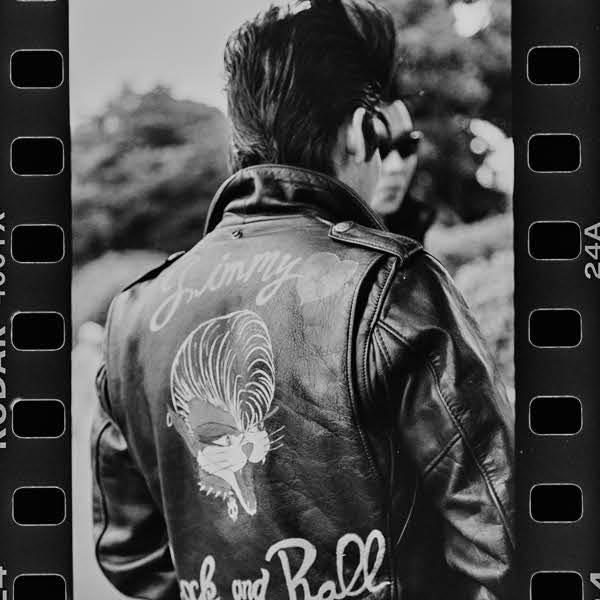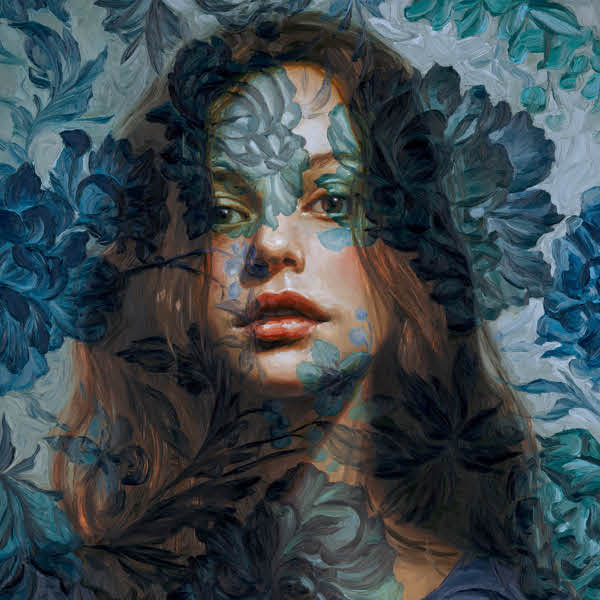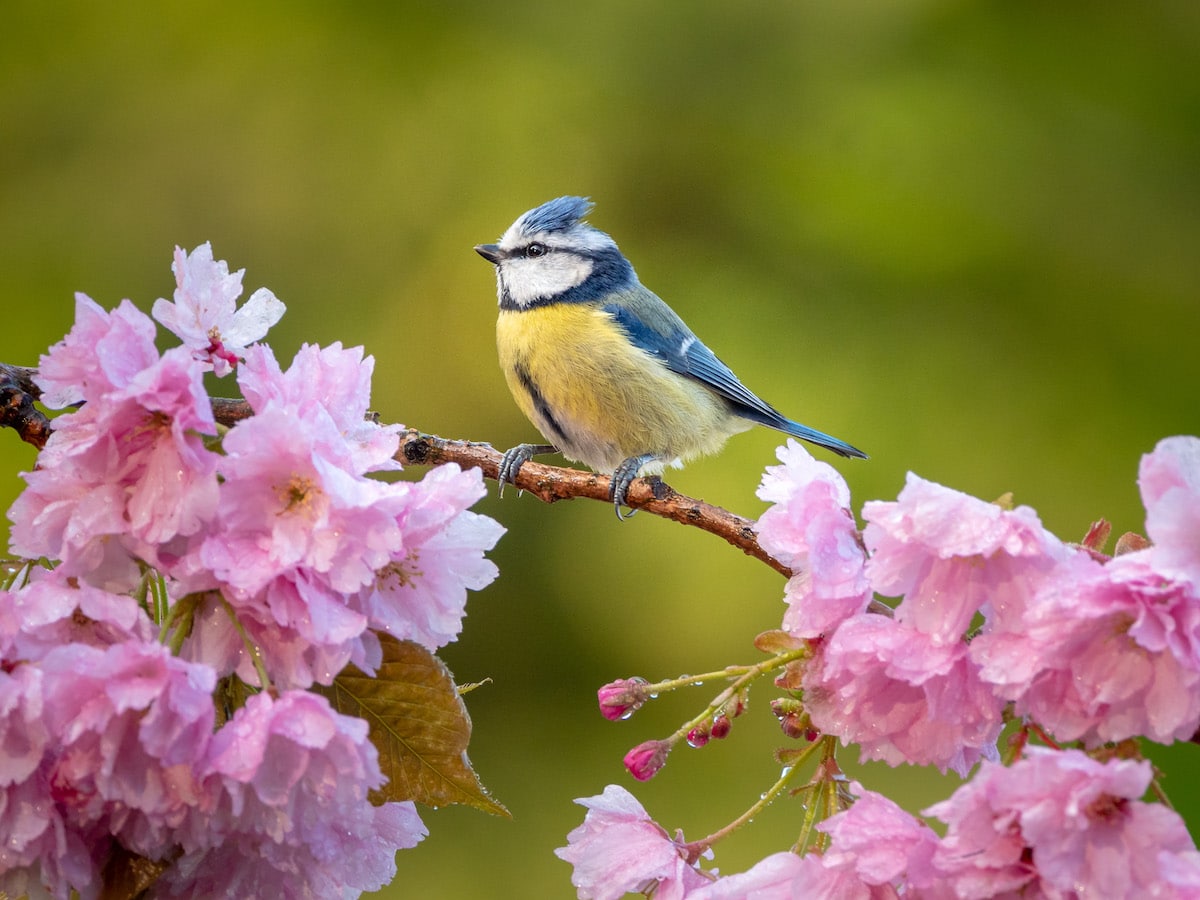
This post may contain affiliate links. If you make a purchase, My Modern Met may earn an affiliate commission. Please read our disclosure for more info.
British fine art photographer David Travis is opening up about the creative process behind his spectacular photographs of garden birds. As a skilled photographer who dabbles in landscapes, portraits, street photography, and travel photography, Travis didn't consider himself much of a wildlife photographer. This all changed, however, after he joined a local photography club.
When one of his early photographs of a bird on a backyard feeder was deemed too tainted by human elements by a competition judge, Travis took up the challenge to better his work. Applying his documentary street photography style to wildlife photography, he honed his observational skills and then began constructing small sets to attract birds. After much trial and error, Travis has been able to produce increasingly complex imagery of birds seemingly in their natural habitat. In reality, they're all just improv actors on the sets that the photographer has built in his backyard.
Now, Travis is opening up about his process and how this early criticism forced him to reevaluate what he thought he knew about bird photography. By peeling back the mask and revealing how he has been able to successfully photograph birds in his own backyard, he's opening up a creative avenue for more photographers to push their own limits.
We had a chance to speak with Travis about his bird photography and how it's changed him as a photographer. Read on for My Modern Met's exclusive interview.

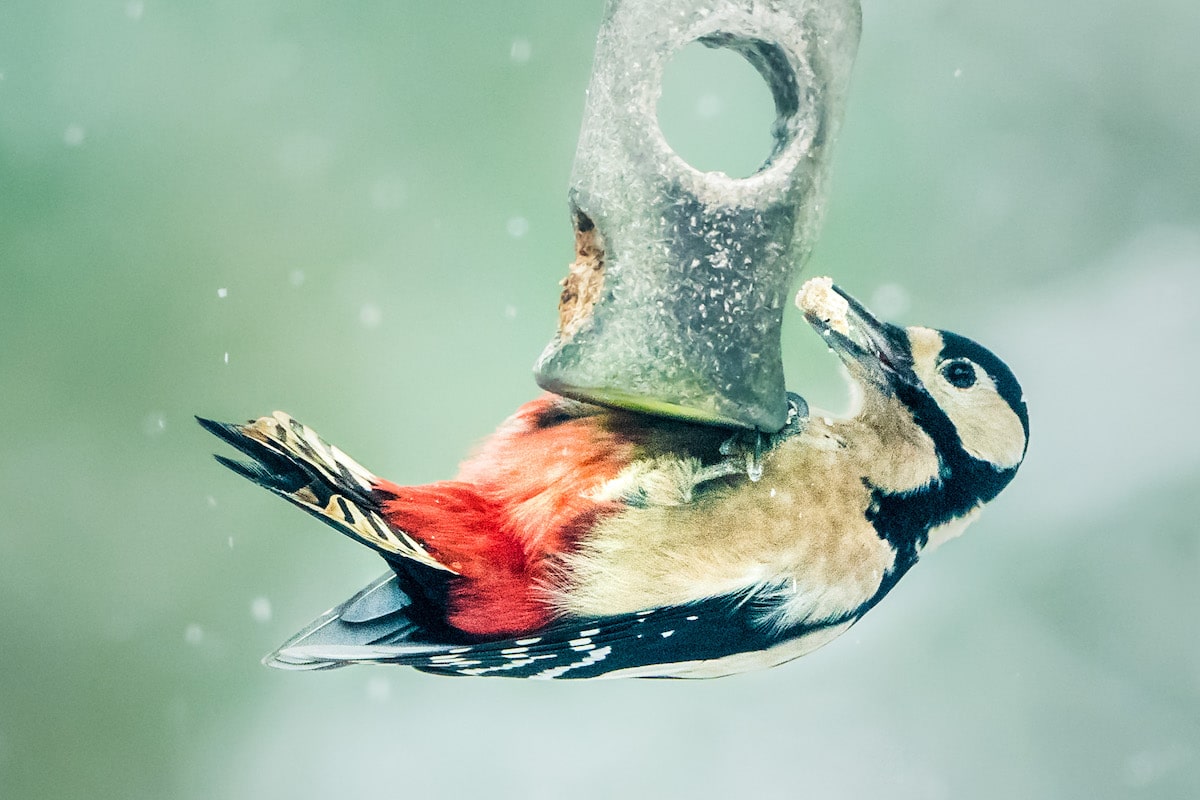
What's your background in photography and what spurred you to join your local photography club?
I first took up photography when I was about 11. My dad was an amateur photographer and taught me how to develop photographs in a makeshift darkroom in a cupboard under the stairs. But I stopped taking pictures (other than snaps) for quite a while until I bought a digital camera in 2011.
The reason I joined a photography club was for motivation. I like to set myself assignments and goals with my photography. I heard about my local photography club and that it ran regular competitions. I thought this would be a good way to motivate myself and it would allow me to get constructive feedback on my images. In fact, it was a judge’s comment on one of my early bird photographs that motivated me to do this. He was critical of a picture I submitted showing a woodpecker on a garden feeder, so I thought, I’ll show him. My first stage was born!
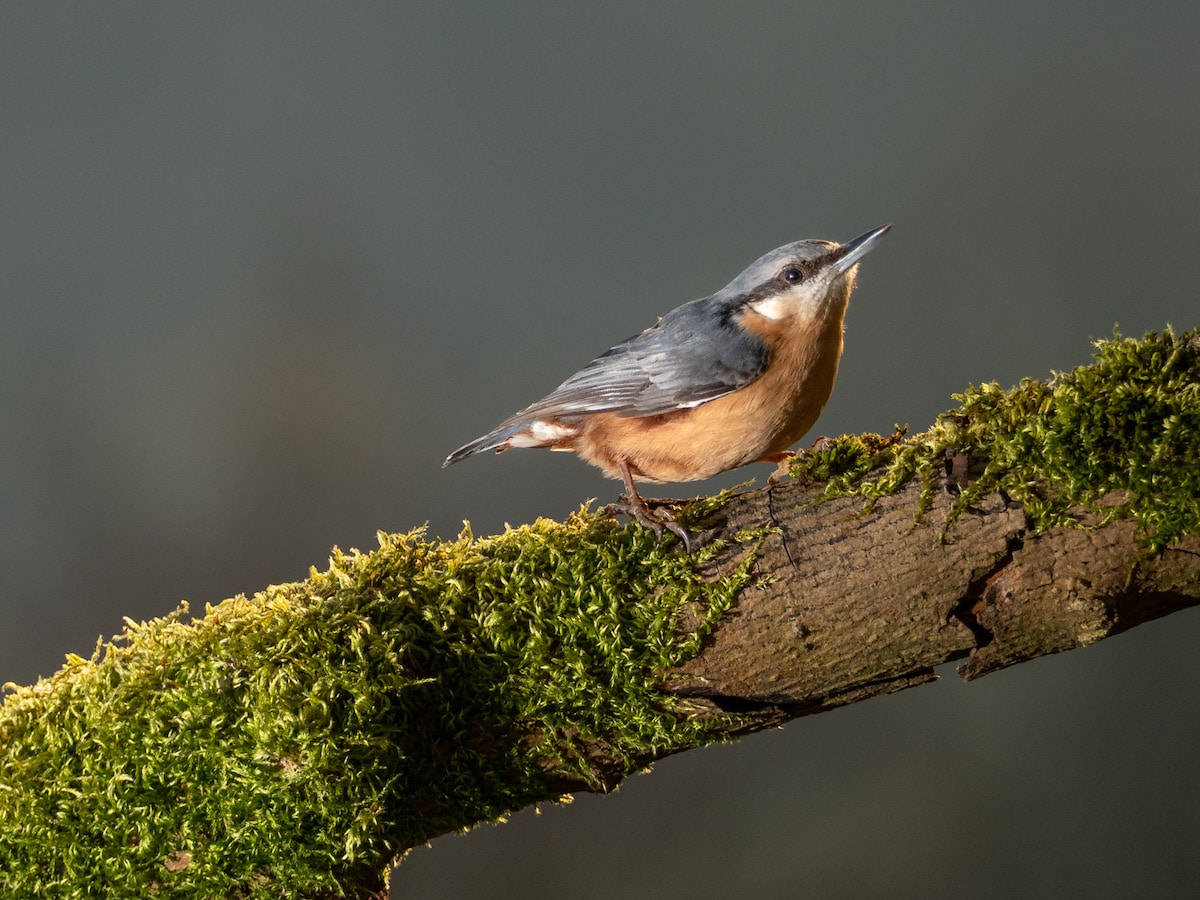
What attracted you to bird photography and what were your biggest challenges early on?
I need to confess something. Until quite recently, I didn’t appreciate bird photography. It always seemed a little like stamp collecting: endless pictures of another species of bird on a twig. Like most people, I tried my hand at taking pictures of birds in the garden and on bird feeders, but as I found out, these didn’t go down well with judges.
They argue that people want to see birds in a natural environment as if you’ve stumbled across them in a local woodland. I learned that a good bird photograph will show the animal ideally engaging in some kind of behavior. But I also wanted it to be aesthetically pleasing and something I would hang on my wall.
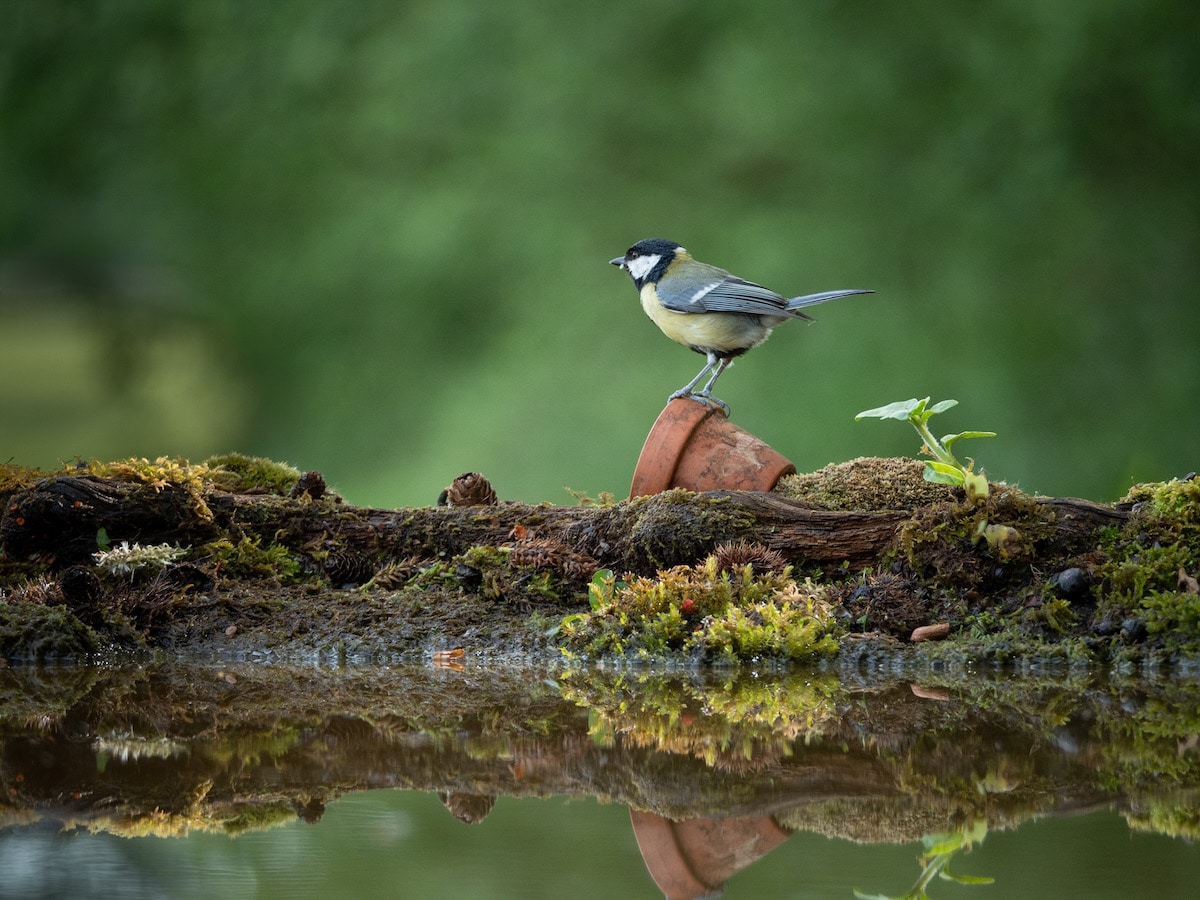
Can you share your philosophy on how street photography and wildlife photography are related?
I think they have more than a superficial resemblance. Like street photography, you have random animals you need to capture—in this case, birds rather than people. Like street photography, you can’t pose your subject. And like street photography, the natural environment can be messy and difficult to simplify.
With street photography, I learned that you can overcome some of these problems by first finding your “stage”—such as a wall with interesting graffiti—and then just hanging out and waiting. So I decided to create a stage for the birds.
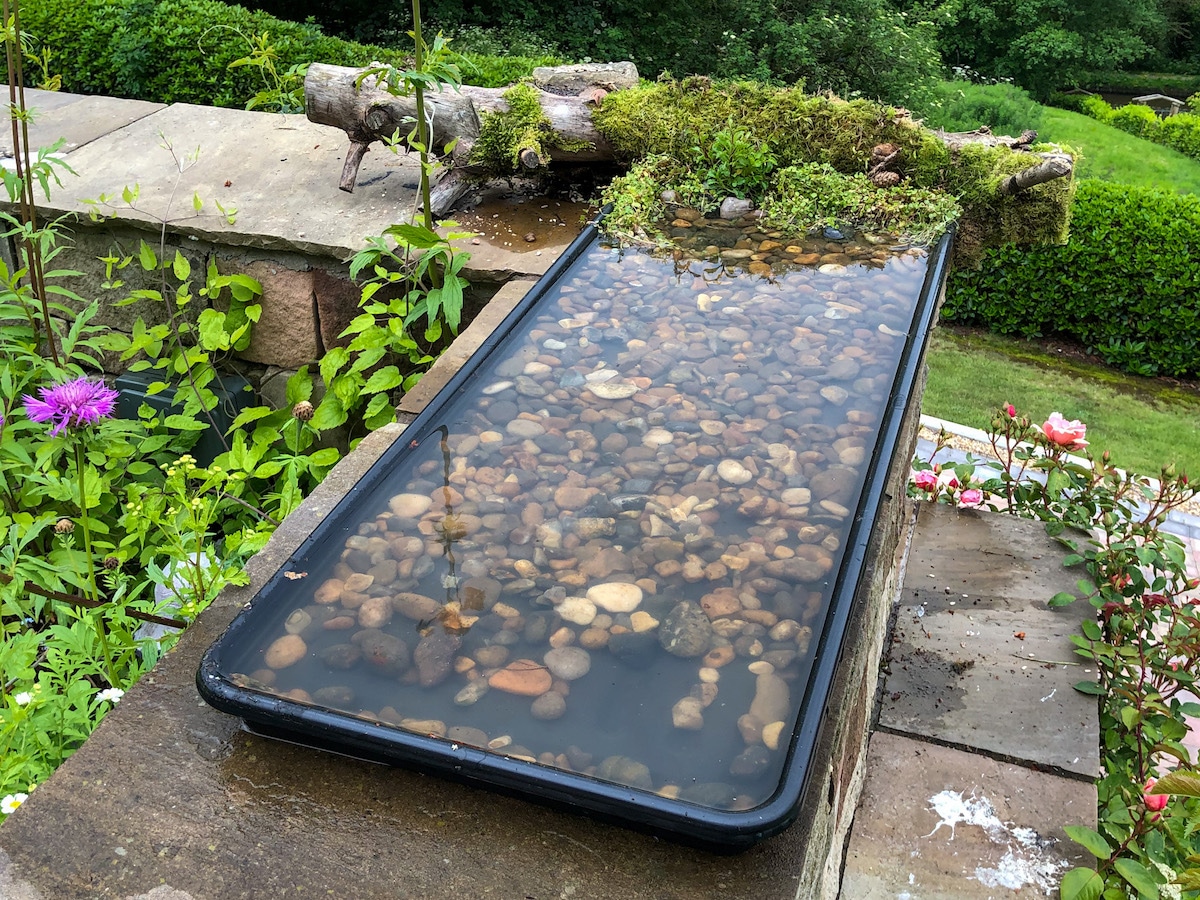
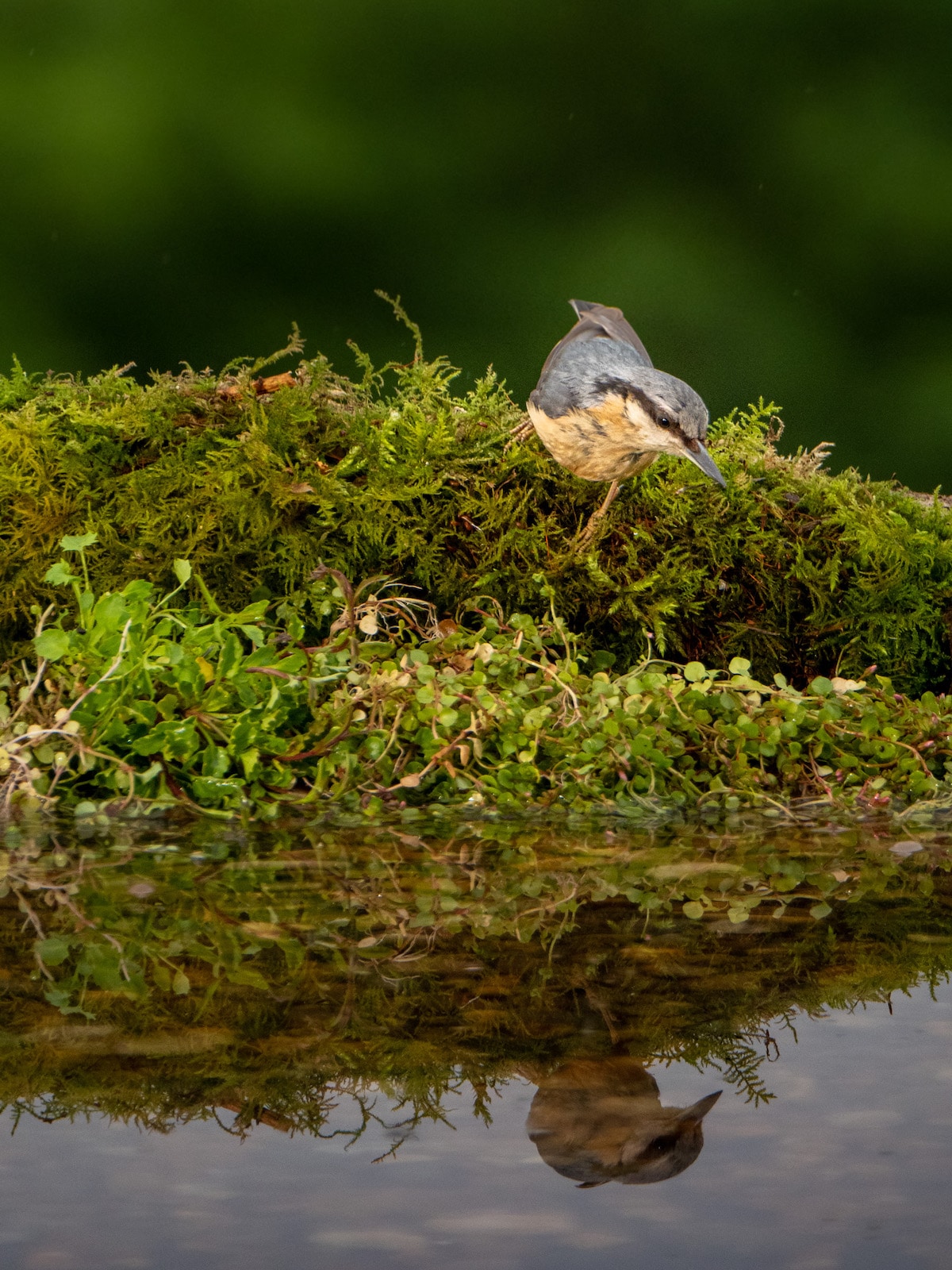
How did you come up with the ideas for the environments you create?
For some of the practical ideas, such as how to mount twigs and how to bait a log, I need to give a shout out to J. Chris Hansen. I learned how to do this from his book Secrets of Backyard Bird Photography. My own goal is to create environments that look as natural as possible, that are bird-friendly, and that are visually pleasing.
If you watch the birds in your own garden, you’ll notice that they tend to queue up before landing on the bird table. I think this is a worldwide phenomenon but of course, it may just be because they are polite British birds! So any prop that allows them to queue works well. A mossy log is one of my favorite props but I also clip blossoms or flowers and mount them next to the bird table.
More recently, I’ve been experimenting with a small reflection pool. I got this idea after visiting a hide in Dorset. My pool is just 1 meter long but if you place your camera in the right spot you can get a wonderful effect from it.
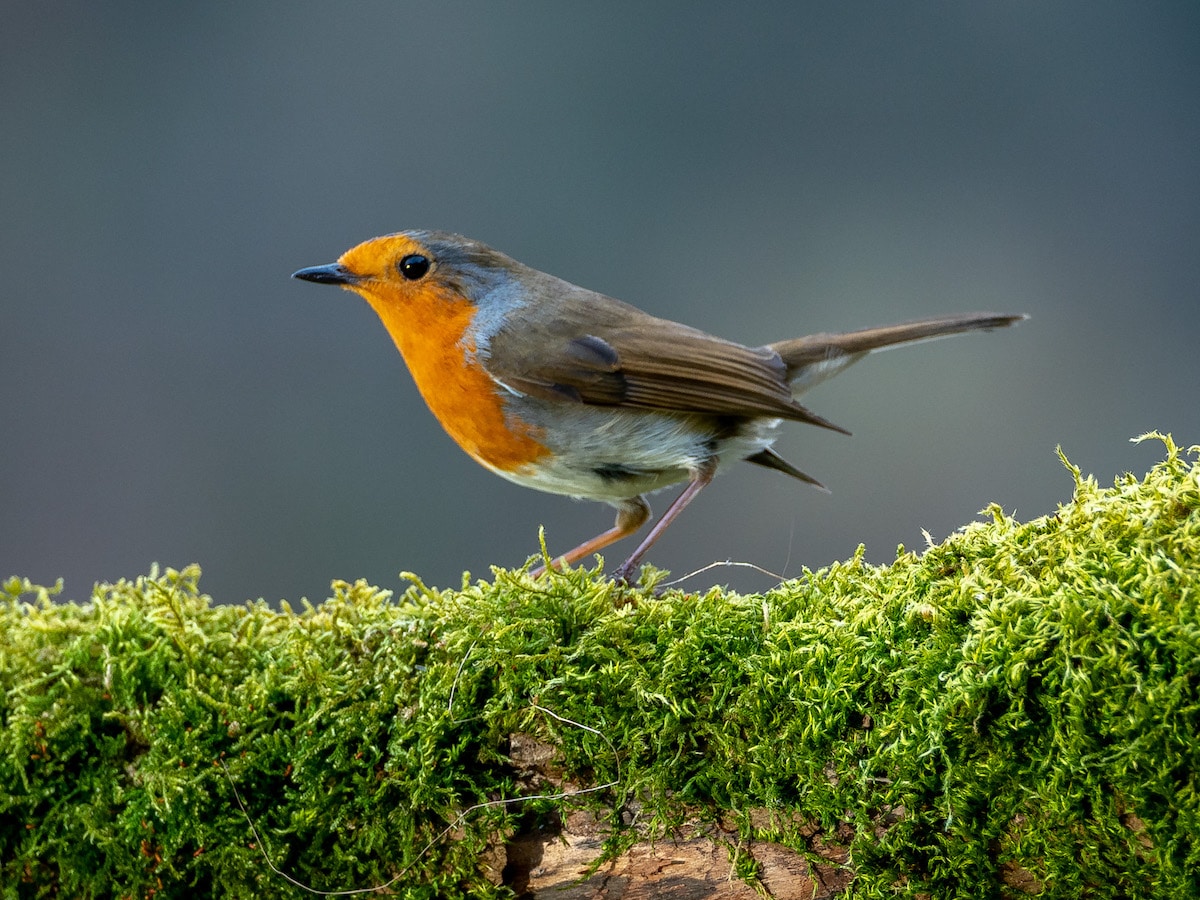
How did it feel when you saw that birds were attracted to your setups?
Relieved and excited. I spent a lot of time trying out different stages before I found one that the birds liked. I remember spending hours on a cold December day with a snow-covered log that was crying out for a robin. But no bird seemed to want to land on it.
I also felt responsible. By this, I mean that I realized I needed to continue feeding the birds even when I wasn’t taking photographs. My setups had quickly got around on the bird grapevine and I was getting more and more visitors. Garden birds are ravenous about this time of year as they have just had their young, so I make sure to keep them well fed.
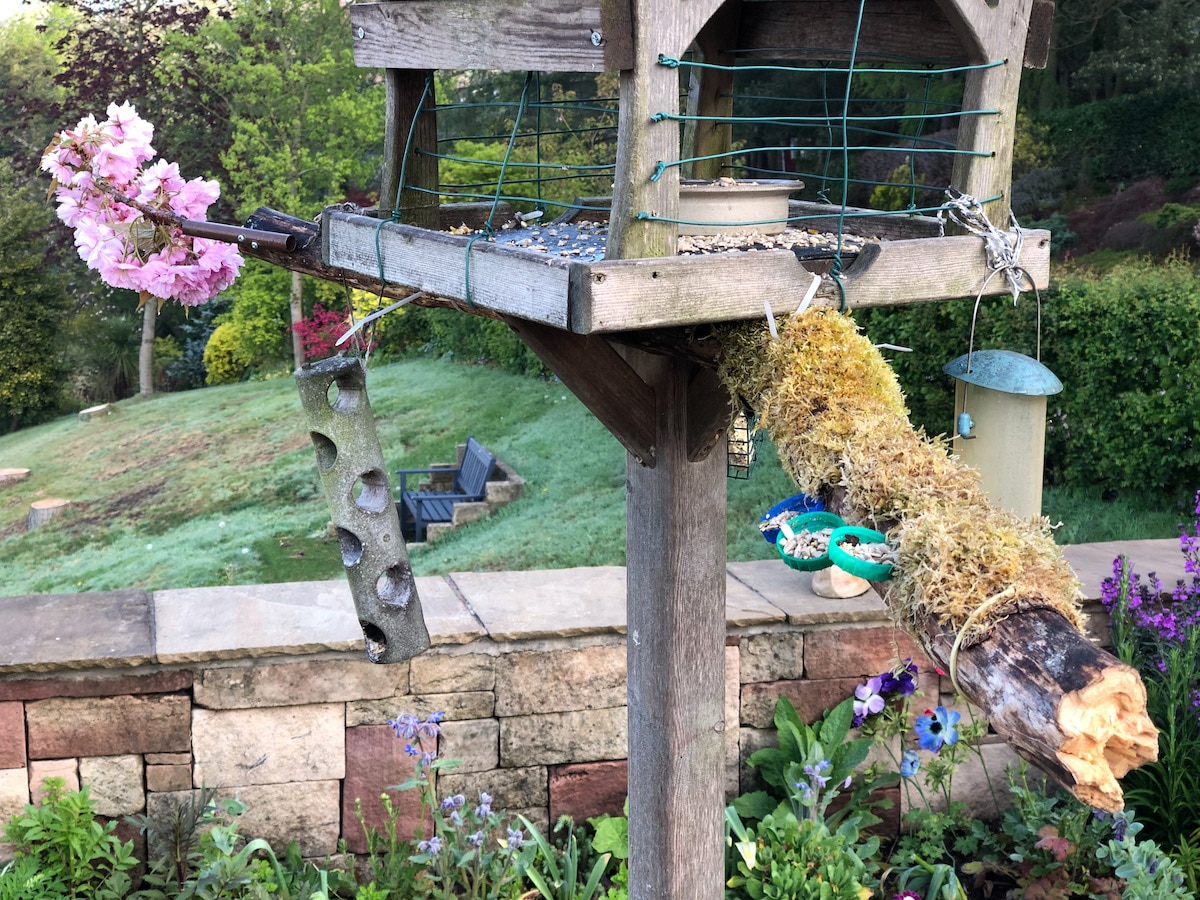
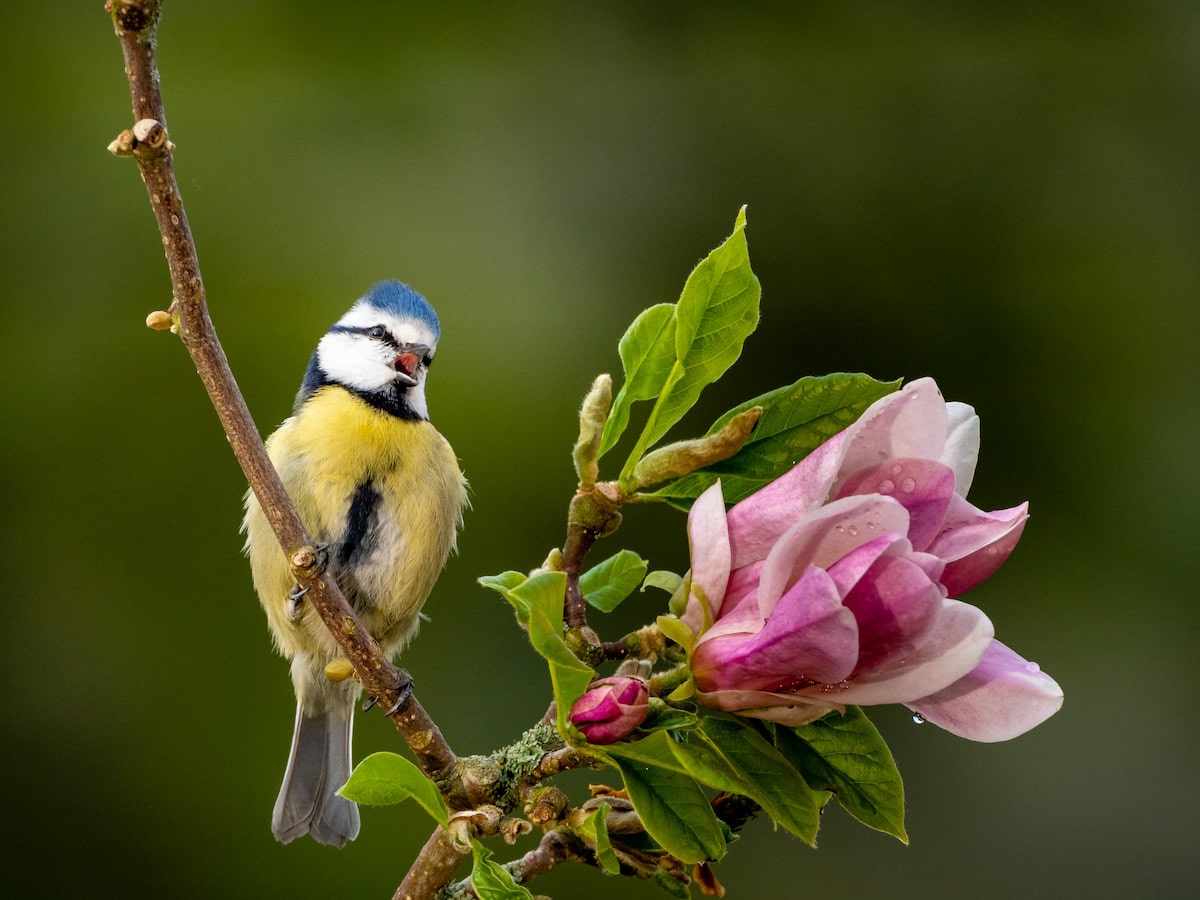
What has been your favorite bird staging and why?
It turned out to be one of the simplest: a twig with blossom on it attached to the bird table. The resulting photograph shows off both the blossom and the bird to good effect. It meets that criteria I set of being aesthetically pleasing—something I would hang on my wall.
What hasn't worked for you and why do you think it wasn't a success?
I tried gelling my flash to create a color tone to the image, but it looked too “lit” and artificial. I also tried moving my camera in really close and using a wide angle lens. It would create an epic photo if it worked but it seemed to make the birds suspicious so I didn’t get many images. But it’s something I’ll try again in the future.
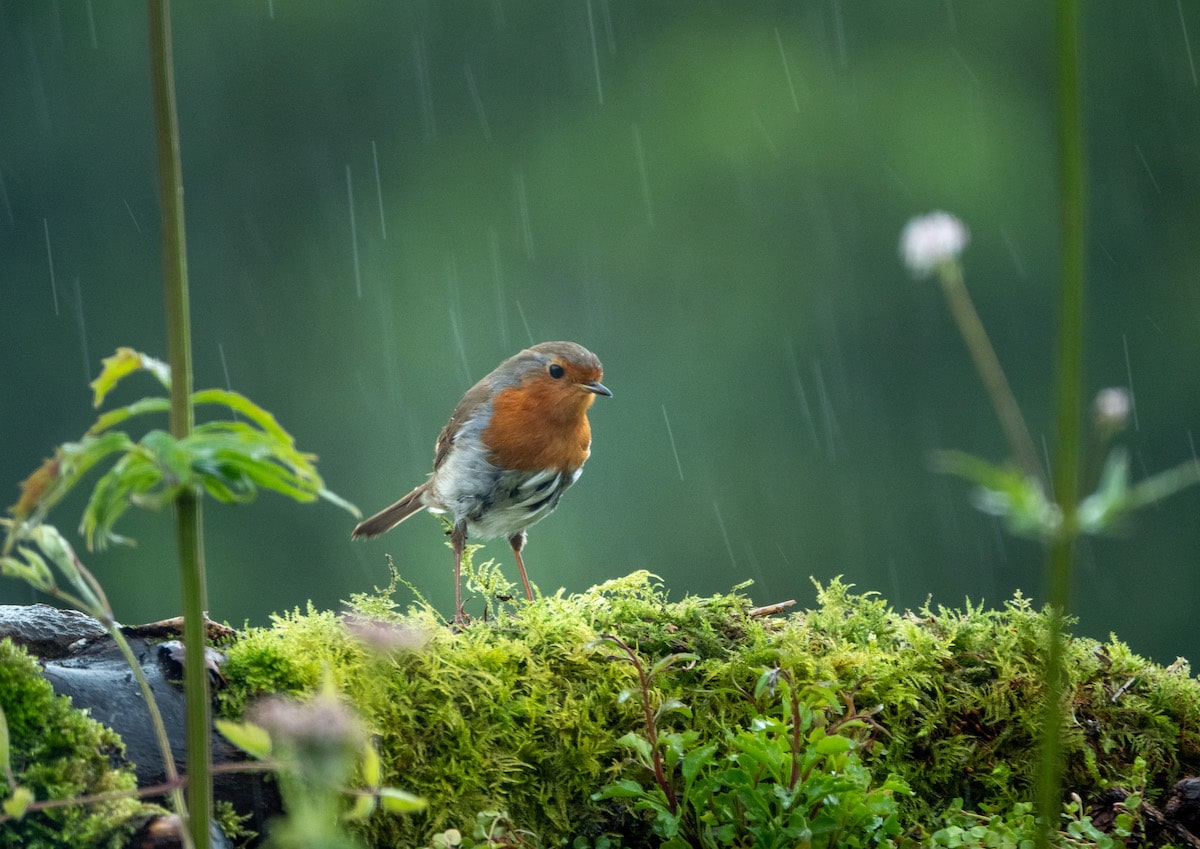
Conversely, what has surprised you most about how birds react to the environments you create?
I thought that the birds would prefer natural perches, like twigs, but it turns out garden birds are happy to perch on anything—even my camera gear! One thing that surprised me is just how light some of these birds are. I was reluctant to use some perches because I didn’t think they would take a bird’s weight but it turns out that the small birds can perch on the thinnest branch—they are quite literally as light as a feather.
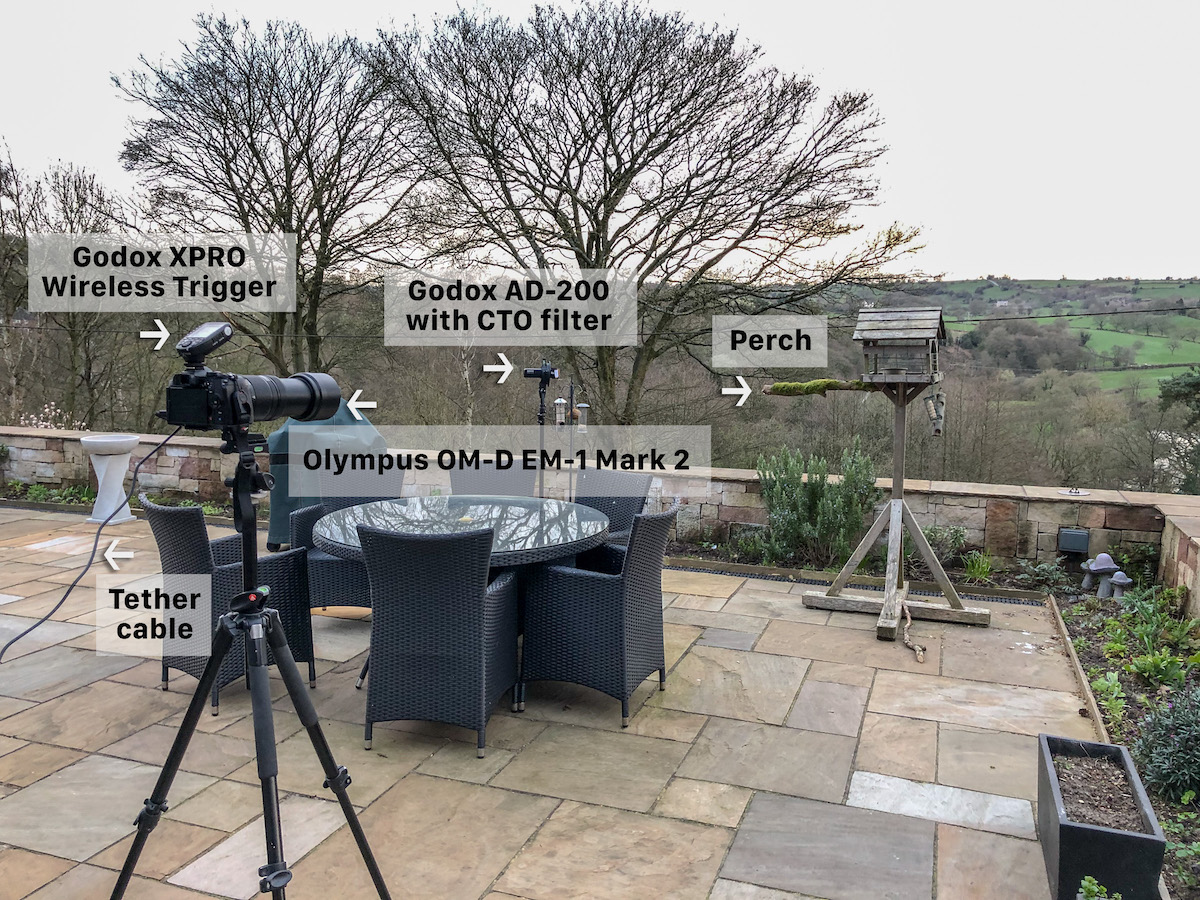
Can you share your favorite gear for taking these photographs?
Garden birds can be skittish so you can’t get very close. This means you need a telephoto lens with a lot of reach. I use a LUMIX 100-400mm Leica lens on an Olympus OM-D EM-1 Mark 2 camera body. For some of the images, I also use an off-camera flash to provide a little pop in the eyes.
The flash doesn’t seem to faze the birds. I find it works best when I trigger the camera remotely—that way the birds never see me as I’m hiding in my conservatory drinking a mug of tea. Because I’m triggering the camera remotely, I also use a tripod and a wireless remote.
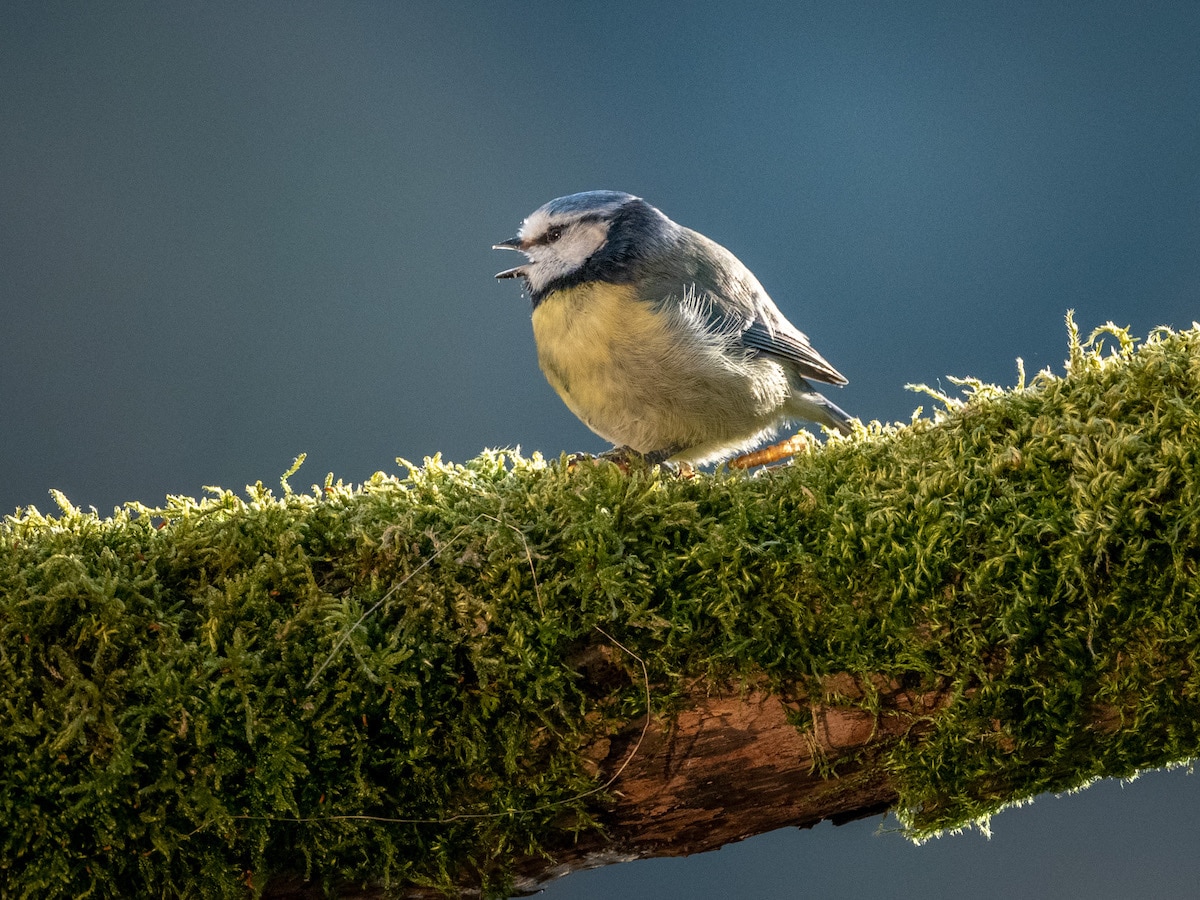
What do you hope others will take away from your openness about how you create your work?
It would be fantastic if people tried to do the same in their own back garden, or at least set up a bird table to observe the wildlife. Before I did this, I could identify only a few different garden birds: robin, blackbird, woodpecker, blue tit…
But you soon get to see other species and you spend time finding out about them and their behavior. Now I can identify not just individual species—sparrow, jay, nuthatch, dunnock—but also specific birds. For example, there’s a blackbird who comes regularly that has a white flash on his back. This makes it very satisfying, a bit like having a pet!
